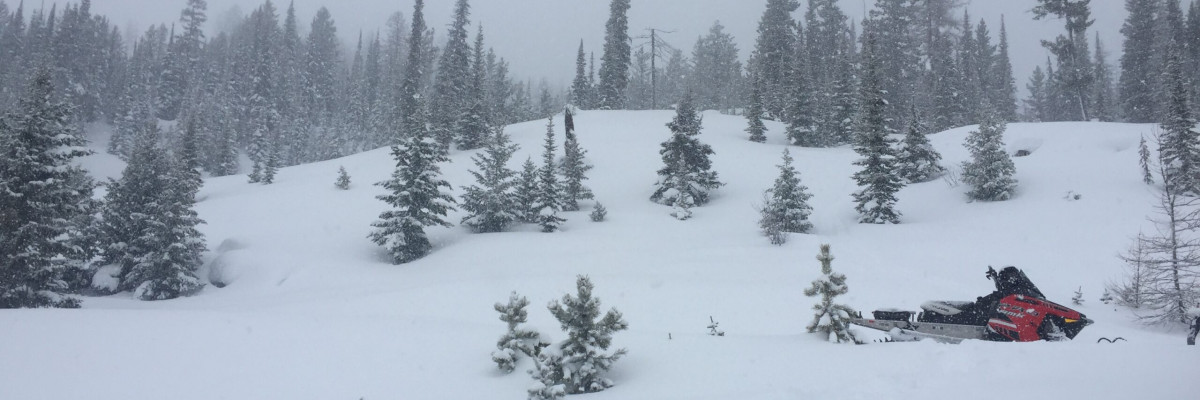The current avalanche danger is HIGH in the west central Montana backcountry. Travel in avalanche terrain is not recommended today. Human triggered avalanches are very likely and natural avalanches are likely. Avoid runout zones.
Good morning, this is Travis Craft with the West Central Montana Avalanche Center’s avalanche advisory for February 07, 2017. This danger rating does not apply to operating ski areas, expires at midnight tonight and is the sole responsibility of the U.S. Forest Service.
Weather and Snowpack
Mountain temperatures range from 8 F to 22 F in the region. Winds are 6 mph with gusts of 10 mph out of the SSW in the Bitterroot. Point Six, in the northern part of the advisory area, winds are reading 10 mph with gusts of 18 mph out of the W. The region has picked up 5 to 7 new inches of snow in the last 24 hours. The new snow had SWE’s ranging from .3 to .6 inches of water. Temperatures have cooled overnight.
Logan and I took the sleds to the southern Missions yesterday. Tim and Greg went to Lolo Pass yesterday. Josh and Matt were in the Rattlesnake over the weekend teaching a level 1 avalanche course. We all observed new loading and high winds. The new snow needs time to bond with the old snow surfaces. We got propagation on persistent weak layers in the Rattlesnake and Lolo Pass(video). The snow was very dense and felt slabby.
The primary avalanche problem is wind slabs. There is a lot of new low-density snow that fell overnight that loaded leeward aspects. Identify wind loaded terrain and avoid it. Stay away from lower angle terrain connected to steeper terrain and avoid runout zones.
The second avalanche concern is persistent slabs. There are multiple weak layers in our snowpack that the new loading of snow has made reactive. There is the possibility of triggering a layer and having it step down to the lower weak layers. Avoid runout zones. Stick to lower angle terrain.
The final avalanche problem is storm slabs. There is significant new snow in the area, and the snowpack needs time to adjust to the new load of snow. Stick to lower angle terrain and give this snow time to settle.
Avalanche and Weather Outlook
In our advisory area temperatures dropped throughout the day and night and it is currently snowing. Our region is predicted to accumulate more light snow through Wednesday. A warmer air mass is predicted to move in Wednesday night raising temperatures. The additional snow will keep our avalanche danger the same.
If you are out in the backcountry, please send us your observations, these are very helpful in producing the advisory. I will issue the next advisory on February 09, 2017.
Ski and ride safe.
























